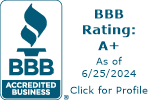A-Mazing Company Beats Us Out at 173 Years
This week, I had the privilege of talking to Al at Maze Nails. We were sourcing a new product for a government contract. My jaw dropped when he told me his company is 173 years old! And I thought Louis Page was old at 131 years. We’re a mere child! They were in their 42nd year when Louis Page started his company.
Commitment to American Companies
My commitment to American companies is unwavering, and I am dedicated to supporting them whenever possible. However, the reality is that the availability of made-in-USA products in our industry is dwindling. The recent acquisition of a major player in the wire mesh industry, leading to the cessation of in-country wire mesh production, was a sobering reminder of this fact.
Certain products are no longer manufactured in America. Hexagonal wire (aka chicken wire), apron fence, and hardware cloth are the three that come to mind. As we submit bids for government contracts in our industry, they always specify “American-made.” I am super proud of this!
Proud to Be an American
“I am proud to be an American” rolls off my tongue when I say this, and I automatically break into song!
I thank my lucky stars
To be living here today
'Cause the flag still stands for freedom
And they can't take that away
And I'm proud to be an American
Where at least I know I'm free
And I won't forget the men who died
Who gave that right to me
And I'd gladly stand up next to you
And defend Her still today
'Cause there ain't no doubt
I love this land
God Bless the U.S.A.
Buy American
Buy American! Buy Louis Page! Buy Family-owned!
Call Terry. She’s waiting for your phone call.
Kind Regards,
Debbie Page
CEO, Louis E. Page Inc – Woman-owned business and Family-owned since 1893. (It adds up to over 131 years owned and run by our family. Think about it: Nobody stays around in business that long without really supporting customers so they want to come back!)










